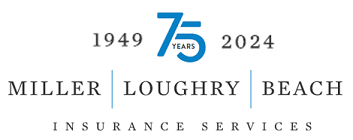Insurance 101: When you're young, you still need a safety net
You’ve graduated college (congratulations!) and moved out on your own. Maybe you’ve started on an advanced degree, gotten your first job or been accepted to med school. It all feels so grown up, but there’s still so much to learn about “adulting.”
One piece of adulthood that can feel daunting is insurance. What kind and how much does a 20-30-something need? Asking a professional to help you “shop” is great first step, and here’s a summary of the types of coverage to consider.
Got a car? You definitely need insurance – not just because it’s required in most states, but because it will protect you and one of your important assets. Check to see what the minimum requirements are for your state and add additional coverage to suit your budget and coverage needs. The various types of auto insurance are:
- Liability, in two forms: bodily injury and property damage liability. These cover other people and other property in a car accident for which you are found to be at fault.
- Medical Payments: This covers medical expenses for driver and passenger injuries.
- Collision: Collision insurance covers the cost of the damage to your car if you get into an accident, whether you’re at fault or not.
- Comprehensive: Comprehensive insurance covers some other car-related damages such as fire, vandalism, and windshield breakage.
- Uninsured or Underinsured Motorist: This covers you and your automobile in the event that an at-fault driver does not have any – or enough – insurance to cover the damage to you or your car.
Health insurance. Even when you’re young and healthy, you’ll need coverage for your preventive care and necessary medical costs. Until age 26, you can be on your parents’ health insurance plan even if you don’t live with them or you’re married. If you’re 26 or older, look for a policy through your employer or higher education institution. Compare your options with what you can purchase at healthcare.gov or your state’s marketplace.
Rent or own a home? If you own, you need coverage against damage and theft, damage to a visitor’s property and costs if someone is injured on your property. Homeowners insurance also covers your home’s foundation, roof and walls, as well as personal property. You may need additional insurance to cover natural disasters, like flooding, earthquakes and wildfires.
Renters insurance will cover damage or theft of items in an apartment, and in some cases, theft from your car. It also covers liability costs if someone is injured in your apartment or if their belongings were damaged or stolen from your apartment. Extremely valuable items such as expensive jewelry, watches, antiques and fine art call for a personal property rider, as renter’s insurance does not cover them.
In both cases, homeowners or renters, make a video inventory of your belongings and store it on a secure cloud-based app as proof if you need to make a claim.
Life insurance. This is definitely something young professionals need, and your employer or higher education institution may offer it. If you’re single and unmarried, you only need enough to cover your burial or any co-signed loans with family members.
If you are married or have a family, you should aim for enough life insurance to help your family offset the loss of your income, even into future years, for expenses like mortgage, car payments, childcare and healthcare. There are two types of life insurance:
- Term life - lower premiums, payout in event of death
- Permanent life - higher premiums but accumulates cash value
Term life premiums are much more affordable when you’re young, and you can lock in rates for policies ranging from 10 years to 30 years, which is ideal for most people. Permanent life can be beneficial for more complicated situations like managing wealth for large estates.
Disability insurance. Though you are young, accidents happen. If you get injured or ill and aren’t able to work, disability insurance will reimburse you for lost income. Disability insurance can cover permanent, temporary, partial or total disability. This is another type of insurance that your employer or higher educational institution may offer. There are two types:
- Short-term - temporary coverage immediately following a serious illness or injury
- Long-term - coverage past the end of your short-term disability benefit period, even to retirement
Think of insurance as a safety net. While you are just starting out, beginning a career and your adult life, catastrophic losses – whether property, income or health – could be devastating to your fledgling efforts to build a nest egg and provide for yourself and your family. Insurance lets you rest easy knowing the “big things” will be covered if the unexpected should happen.
Eddie Miller can be reached at 615.849.4255 or eddie.miller@mlbins.com.
Our affiliate Pinnacle Financial Partners recently introduced a checking account for Young Professionals, and they can provide advice on managing your finances.
